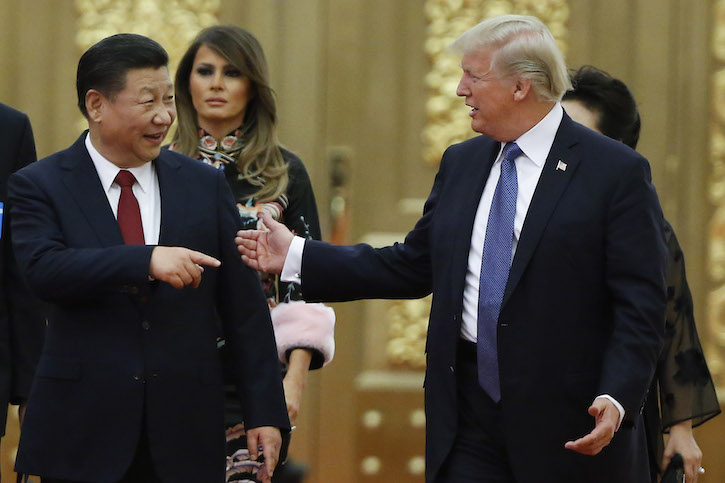
By Henry M. Paulson, Jr.
We find ourselves in a moment that might appear, on the surface, to be the most turbulent for U.S.-China economic relations in a generation. Our fundamental differences on next steps with North Korea will only exacerbate these tensions. During the first two quarters of 2017, we’ve seen the Trump Administration promise a “new approach” to China that breaks with past policies, deploys new punitive trade measures, and contemplates reciprocity as a core principle of investment policy. Washington has leveled charges and threatened various punishments, while Beijing has promised retaliatory countermeasures.
Despite the rhetoric, however, I am increasingly skeptical that we are heading for what can truly be dubbed a new era. Let’s not forget that even without the election of Donald Trump, support was growing in the United States for a more confrontational approach to trade and investment disputes that Washington has seemed willing to kick down the road for some time. In fact, the United States holds significant leverage over our trade relationship with China, and sometimes playing smart offense can pay off.
I believe the Trump Administration is right to consider initiating a review of U.S. trade policy with China. The relationship between the two countries can withstand a trade-related stress test without entirely poisoning the well. And Washington should not be deterred just because China has considerable economic leverage.
The first step in U.S. trade action is the rarely exercised Section 301 investigation that President Trump directed his U.S. Trade Representative to undertake last month. In essence, the President has obligated USTR to investigate whether the United States should investigate China’s intellectual property practices for “harm [to] American intellectual property, innovation, or technology.” Put differently, this instruction fell short of actually directing a trade action. But it should at least signal that USTR’s approach to China will get a much-needed reset.
The Administration’s use of a 301 could turn out to be an effective tool. Utilized only three other times with China, and not since the mid-1990s, history has shown its benefits during trade flare-ups. In each case, instead of starting a trade war, these investigations prompted negotiations that resulted in increased cooperation.
Now, more than two decades later, the principal subject of the current 301 investigation is intellectual property rights (IPR) protections. Estimates show that the United States is losing up to $600 billion annually to theft, and China accounts for at least 50 percent of this piracy. What’s more, IP theft today is increasingly easier to pull off. Such theft is often conducted covertly through cybercrimes or through China’s requirement that foreign firms transfer their technology to gain access to China’s highly desirable market. Without question, some Chinese companies have illegally benefited from American companies’ R&D and innovation. All this to say that Washington (and Brussels, and other global trading stakeholders, for that matter) has good reason to push China harder.
Of course, trade action alone is unlikely to protect American IP from China’s predatory behavior. The Trump Administration will need to couple its punitive measures with a strategy that encourages Beijing to value and protect innovation, regardless of country of origin. The challenge to this strategy is China’s longstanding technonationalism-the idea that China must retain its own technology and compete with other powers to develop and deploy it. China’s desire to produce cutting-edge technology, not just consume it, further complicates the matter.
To be fair, China deserves credit for dramatically improving some of its IPR protections. It has created a world-class (if often capricious) IP-related legal structure, created specialized IP courts, and improved the situation in major cities. But more actions are needed from Beijing and local governments on enforcement, particularly now that IP theft is increasingly more rapid and pervasive.
While China has made strides in its reforms since it entered the World Trade Organization in 2000, its leaders have tended to alter China’s domestic administrative environment rather than making significant progress in opening to foreign firms, especially in recent years. At the Paulson Institute, we often harken back to Deng Xiaoping’s famous dictum from the late 1970s that China should undertake “reform and opening up.” To us, it appears that the two parts of this dictum are increasingly diverged in today’s China. Thus, to the extent that reform is indeed taking place, it’s happening without concurrent opening to foreign competition.
The other challenge is in the WTO’s institutional function, as it has proven ineffectual in updating trade rules to reflect today’s global market realities. It remains an important institution for litigating trade conflicts; but when it comes to developing the trading rules of the 21st century, the WTO has fallen down on the job. Unfortunately, Washington can’t rely solely on the WTO either to resolve IPR conflicts with China or other unfair or discriminatory applications of laws, regulations, or standards that disadvantage U.S. companies.
It’s time for the United States to consider the variety of options available beyond just the 301. Today, China is obviously stronger, more confident, and more powerful. But the nature of our bilateral relationship is also deeper and stronger. The central question for U.S.-China relations is whether an IP-driven trade spat would provoke a downward spiral. It could. But if the United States and China treat the spat as an opportunity for negotiation rather than entering into a debilitating cycle of trade measures and retaliatory countermeasures, then much good could come of the new approach. So let’s not hit the panic button quite yet.
Henry M. Paulson, Jr., is Chairman of the Paulson Institute.


